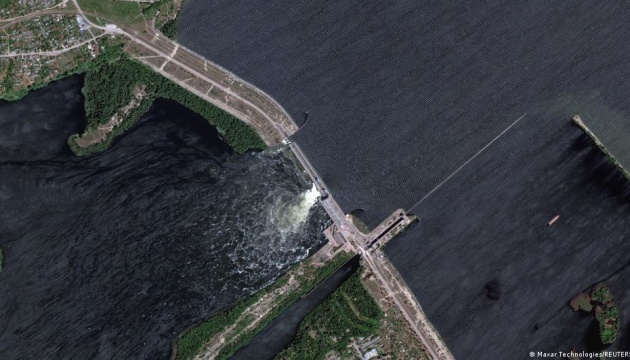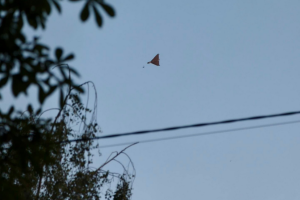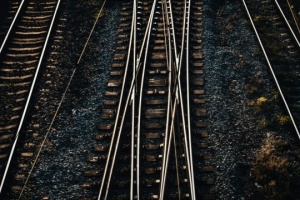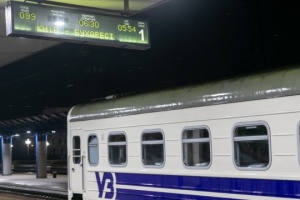
Scientist on destruction and losses at Kakhovka HPP: This is problem for decades
Serhiy Dubniak, Candidate of Geographical Sciences of Ukraine, Head of the Department of Environmental Hydrology and Technical Hydrobiology of the Institute of Hydrobiology of the National Academy of Sciences of Ukraine, member of the Lower Dnipro Basin Council, said this in a comment to Ukrinform.
"Now water from the reservoir flows in a continuous stream. It is quite difficult to accurately estimate the size of the outlet [water gall formed when a water flow breaks through a hydrotechnical structure] in the Kakhovka HPP dam since we do not know exactly how deep these destructions are and how much water can flow from the Kakhovka reservoir. Judging by the videos on the Internet, half of the spillway dam and the construction of the hydroelectric power station itself are completely destroyed.
Moreover, the destruction continues as the structures are washed away by the water flow. The spillway dam is 28 shutters that could be raised and lets water pass in case of a large flood. Now there are neither shutters nor structures between the shutters in the place of the outlet as can be seen on the video," Dubniak said.
According to him, the main risk now is the flooding of the territories adjacent to the lower section of the Dnipro River (below the Kakhovka HPP), mainly on the left bank, which is lower.
As the scientist added, certain areas on the right bank are also under the threat of flooding, including in the city of Kherson, but the main part of Kherson is quite high compared to the water level.
"Now the urgent problem is to evacuate people who are directly in the low-lying areas. But we [Ukraine] do not control the temporarily occupied areas and we cannot do anything there," the expert emphasizes.
"The water moves at a high speed (more than 20 m/s in the place of the outlet), there will be erosion in coastal areas, destruction of the surface layer of the soil, damage to vegetation, possible destruction of houses and other structures. The main phase of flooding will last from several to 10 days. It will be possible to say exactly after estimating the volume of water that will flow from the reservoir. In the future, the level will not rise, but water will return to the channel gradually and it may last longer than the rising phase. For agricultural land, flooding for a relatively short period may not be critical, but crops are most likely to be lost. All pollutants that were on the flooded surface will enter the water and through the surface water can enter the groundwater. If groundwater is used for water supply, then this is a direct threat to the population, groundwater does not recover as quickly as surface water in river systems. For the lower Dnipro, the situation is now catastrophic, but relatively short-term," said Dubniak.
According to him, it is still impossible to accurately assess what will happen to the reservoir itself or to its area.
"The Kakhovka reservoir, judging by everything, will be drained. The area of the Kakhovka reservoir is more than 2,000 sq km. Most of this area will be drained. Of course, we will get not the Dnipro valley that was flooded during the construction of the Kakhovka HPP, but a surface covered with silt, largely polluted by substances that settled to the bottom of the reservoir during the long period of its existence. Bottom sediments that are not fixed by vegetation will be washed away by rains, and when they dry out, they can even be blown away by the wind. Gradually, vegetation will appear and the soil will settle, but it will take a long time. In fact, the ecosystem of the reservoir and its biomes, starting with fish and ending with the simplest organisms, will be lost in such a situation.
A small part of the reservoir immediately adjacent to the destroyed dam may remain provided that the concrete foundation of the dam is not destroyed. But it can already be stated that most of the reservoir will be drained. Over time, a new ecosystem, close to the river ecosystem, will begin to form in the area of the reservoir," said Dubnyak.
The consequences for farms and settlements located along the perimeter of the reservoir will also be catastrophic.
"Water intakes of cities and enterprises, irrigation systems, cooling system of the Zaporizhzhia NPP – all this was adjusted to the appropriate reservoir levels. During the year, the level fluctuation in the reservoir was small. This is due to the peculiarities of its operation. Since the water supply to the North Crimean Canal was carried out by gravity, it was necessary to maintain a certain level of the reservoir. The ecosystem was configured so that the reservoir level fluctuated throughout the year mainly in the range of 15 to 16 m above sea level. Last autumn, when the gates on the dam were damaged, the water level dropped to 14.5 m in the winter. Then, on the contrary, in the spring, the reservoir overflowed – more than 17 m because the occupiers did not regulate the passage of the spring flood.
Serhiy Lysak, Head of the Dnipropetrovsk Regional Military Administration, posted on Telegram that the water level in the reservoir dropped by 1.5 m as of 12:25, June 6. This means that in less than 10 hours from the moment the dam was blown up, about 3.2 cu km of water flowed out of the reservoir. At the same time, the average flow of water from the reservoir was supposed to be 88,000 cu m/s, which is more than three times higher than the maximum flow observed on the Lower Dnipro during spring floods. Considering the construction of the dam and the scale of the destruction, the level may drop to 7 m in the future," said Dubniak.
According to him, rebuilding the dam is a difficult task even under favorable conditions.
"In fact, the dam and the hydroelectric power plant have been completely destroyed. They must be created anew. How all dams were built: a canal was built to bypass the area where the dam should be. The size of this channel should be such as to ensure the passage of the Dnipro River water at different times of the year. The construction of each dam on the Dnipro River took several years, and the preparatory works took even longer. It's hard to even imagine the human and material resources. Ukraine itself will not incur such costs," the scientist said.
According to him, if Ukraine refuses to restore the dam and reservoir, then it must resolve the issue of recultivation of those lands that were previously under the Kakhovka reservoir. Second, according to him, the entire infrastructure that was set up for the reservoir will need to be rebuilt.
"The entire infrastructure linked to this reservoir (water supply system, logistics, cooling system of nuclear and thermal plants, etc.) will need to be fundamentally changed. In fact, irrigation, which is carried out in the south of Ukraine mainly from the Kakhovka reservoir, will be impossible," Dubniak said.
According to him, the solution to the problems caused by the Kakhovka HPP explosion by Russian troops may take years, if not decades.
"The problem is for years, that's for sure, but rather for decades. Its solution is possible only after our Victory and will require the extraordinary efforts of Ukraine and the help of the international community," the expert said.
As reported, the Russian army blew up the Kakhovka HPP dam on the night of June 6. In Kherson region, the evacuation of the population from dangerous places, which are at risk of flooding due to the explosion, has begun. Law enforcement officers have intiated an investigation under the article "ecocide". Ukrhydroenergo hydro power generating company stated that the Kakhovka HPP is completely destroyed and cannot be restored.




